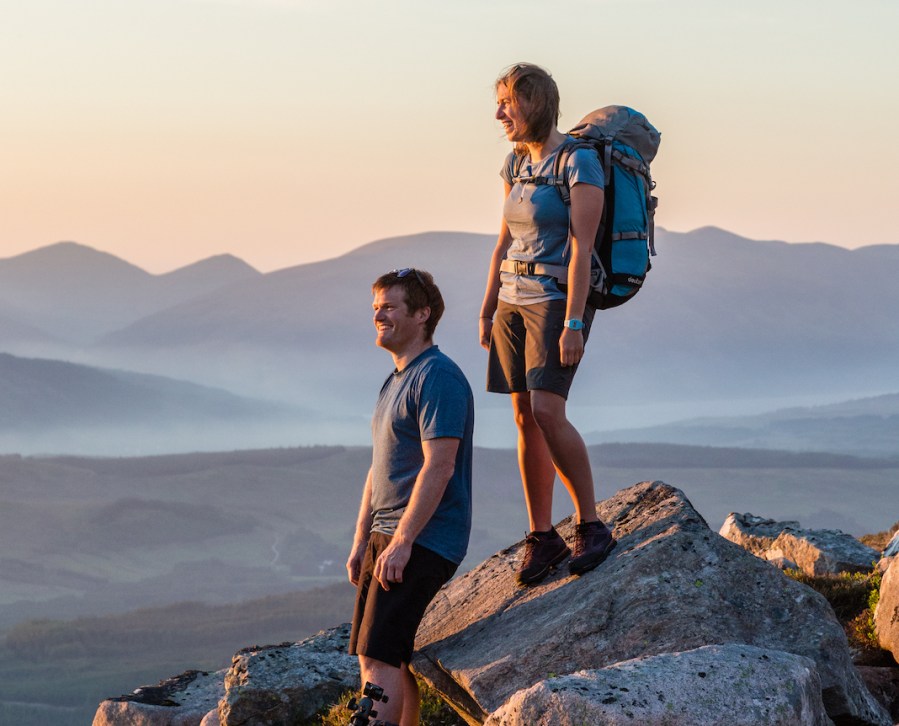Want to hike mountains? Outdoor instructor Brad Reed of Plas y Brenin shares his top hillwalking tips – whether you’re a total newbie or an enthusiast returning to the peaks after a forced hiatus.
The last 12 months have seen more and more people exploring the great outdoors from their doorsteps – and that’s been amazing to see. But most people have been limited to their towns or cities. Once restrictions ease, getting out into the countryside will really increase your enjoyment of walking. Embracing expansive views from a hilltop will give you a sense of freedom and help you escape the complexities and stresses of modern life by resetting the mind.
Perhaps you’ve been away from the hills for so long, you’ve completely forgotten what to pack or wear? Or maybe – after discovering a love for local walks during the pandemic – you’re eager to go hillwalking for the first time? Either way, these hillwalking tips will help you stay safe and happy during your post-lockdown mountain adventures.
1. Get Kitted Out
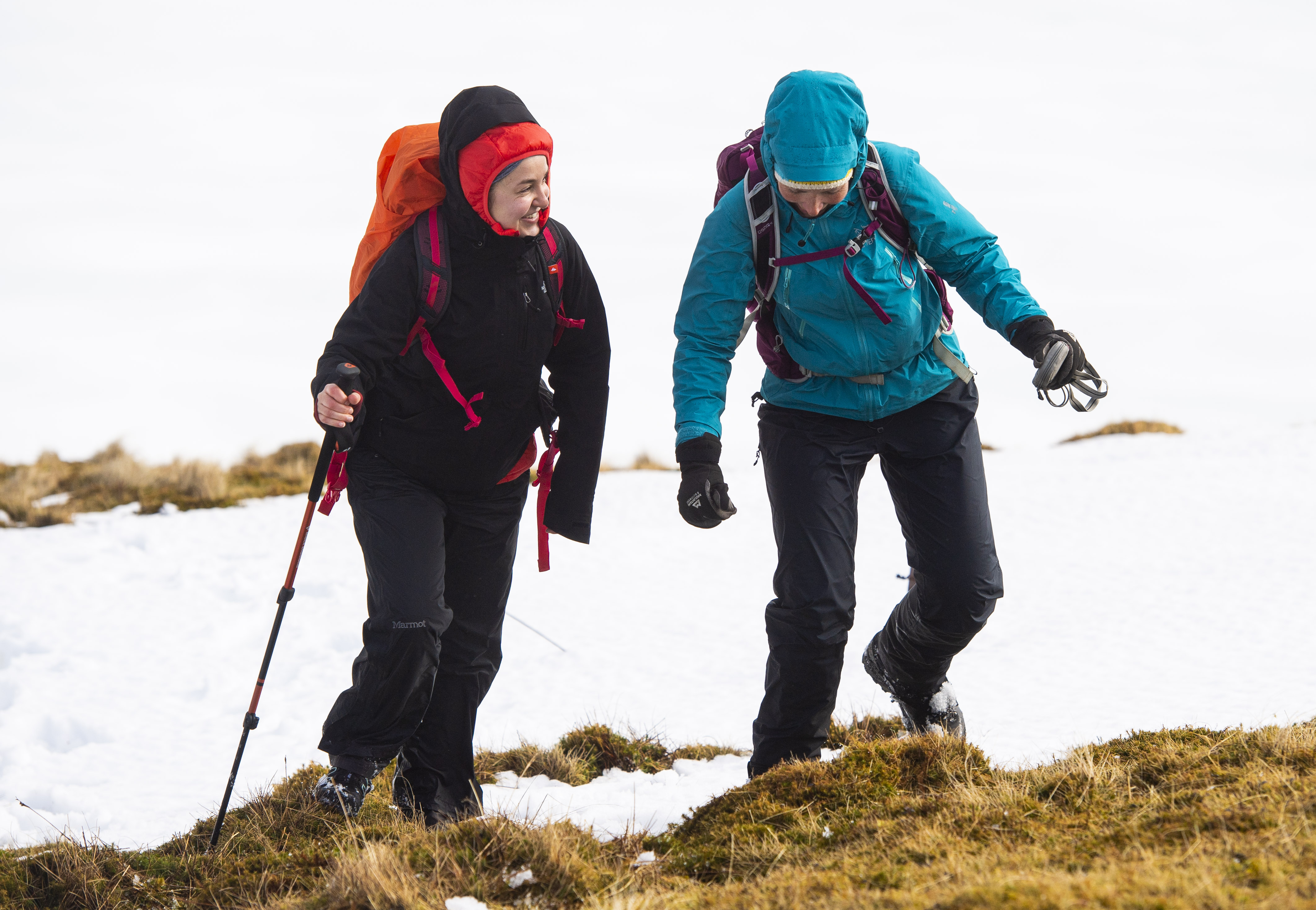
A Glasgow Young Walkers event in Balquhidder, Scotland. Photo: Ramblers Scotland
You’ll want clothing that keeps you warm and dry – but that can be tricky in the notoriously changeable British weather. One minute it can be glorious sunshine, the next it’s hailing like there’s no tomorrow. The best way to manage your personal thermometer is to have a selection of layers depending on the weather that day. A wicking base layer is great for taking sweat away from the skin, but be sure to carry two to four additional layers with different thicknesses so you can adjust your clothing to suit your temperature on every section of the walk. A light fleece, down or synthetic jacket, and waterproof jacket and trousers should suffice.
In terms of footwear, a sturdy pair of walking boots matched with some high-quality walking socks will give you the best comfort and safety for getting into the hills. See a pair of boots as an investment. Take your time trying on lots of pairs in the shop and select a pair based on how they feel, rather than the look or brand.
A sturdy, 30L rucksack with a hip-belt is a great place to store your high energy food and water for the day. It will also be home to your waterproofs, any extra layers you need such as a softshell or down jacket, and a group shelter in case of any extended unplanned stoppages. Pack a hat and gloves in cold weather, or sun cream and glasses when it’s glorious, and a headtorch when the days are short during autumn and winter. Other things to remember include maps, compass and a mobile phone.
2. Build up your experience slowly
Don’t jump headfirst into the deep end with full-day hikes in the remote countryside and big mountain areas. Instead build up progressively, starting with shorter, lower-level walks. If you reflect on all the walks you have done and draw learning points from each one, over time you will become more knowledgeable, comfortable and confident whilst out hillwalking.
3. Find some hiking buddies
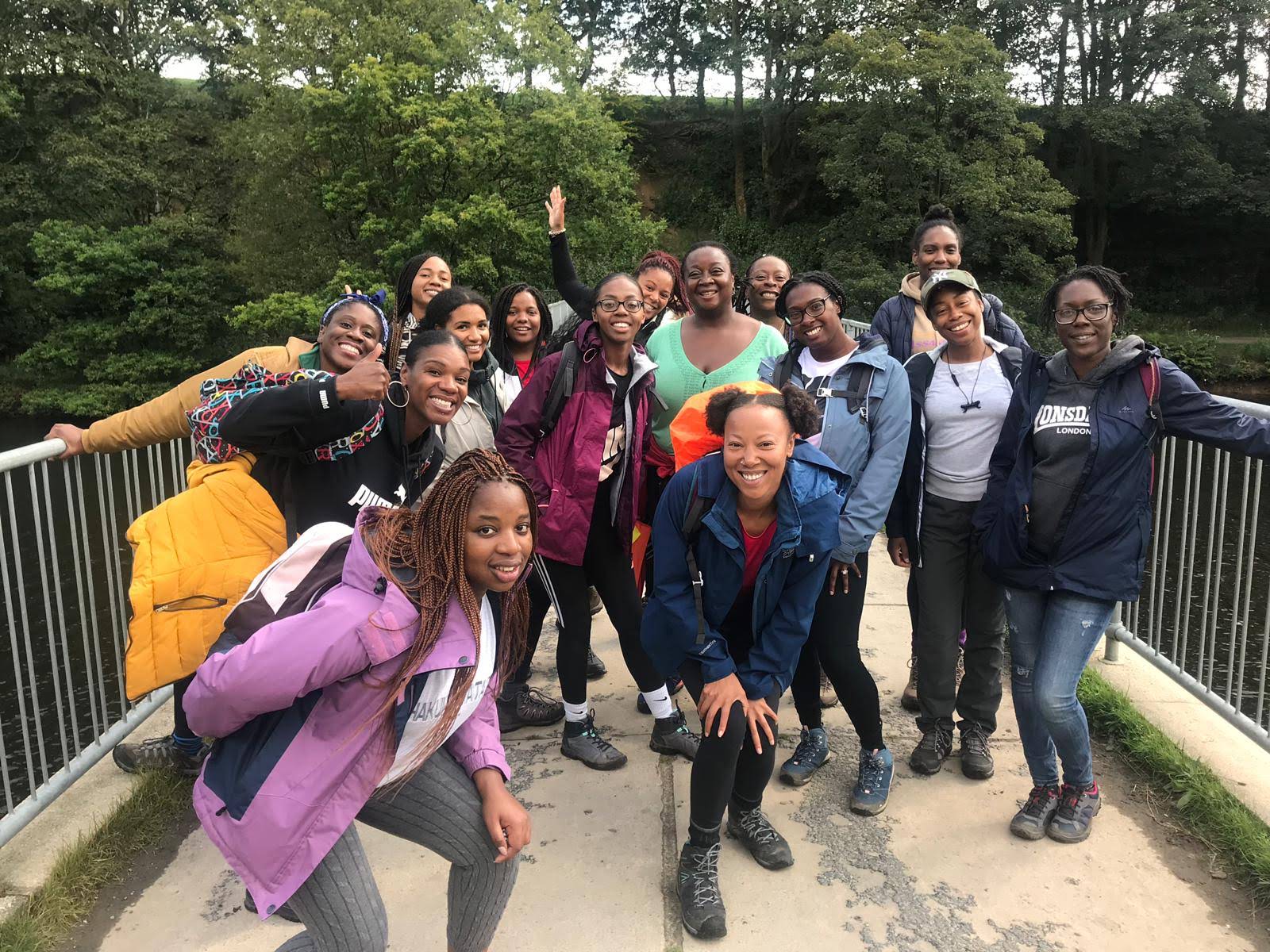
A walk by the brilliant Black Girls Hike. Photo: Black Girls Hike
If you don’t have any walking buddies and don’t feel comfortable going it alone, then maybe joining a club will help you to gain confidence and skills from experienced walkers. Walking clubs are extremely diverse, ranging from ‘traditional’ clubs with relatively formal membership arrangements to younger groups with an emphasis on inclusivity and diversity (see the ‘Best Walking Groups’ box). There are also a large range of commercially-run walking groups, so do your research and find one you fancy. If you don’t like the vibes try another one. The BMC has a list of affiliated clubs on its website, for example.
Alternatively, you might want to get some input from a course before you head out with friends. At Plas y Brenin we run week and weekend hillwalking and navigation courses in the heart of Snowdonia for a great confidence and skills boost.
4. Learn how to navigate safely
Having the skills to read a map, use a compass and interpret a GPS are essential for a safe hillwalking experience. But, like any skill, it takes time to improve your knowledge and confidence. Whilst it can seem quite daunting at first there are lots of great resources out there to help you learn, from guidebooks to YouTube tutorials – or why not consider attending a navigation course? With a professional instructor, you will pick up new skills rapidly.
As a supplement to map and compass, GPS devices or mapping apps are fantastic for relocation and confirmation of your location. However, be cautious of over-reliance in case they run out of battery, lose signal or become difficult to use in bad weather. Even if your phone is waterproofed, using a touchscreen in the rain can be infuriating.
5. Be flexible with your plans
When planning a route in advance, a good approach is to give yourself a few options to choose from, say a high, medium and low-level walk. Then once you have checked the weather forecast and taken into account all of the needs of your group, you can select the best option. Take this approach throughout the walk too. Think about factoring in decision points where it’s possible to either take a more challenging route, if everyone feels it is appropriate or to take an easier option if the weather, tiredness and enthusiasm aren’t on your side.
6. Slow down and enjoy nature
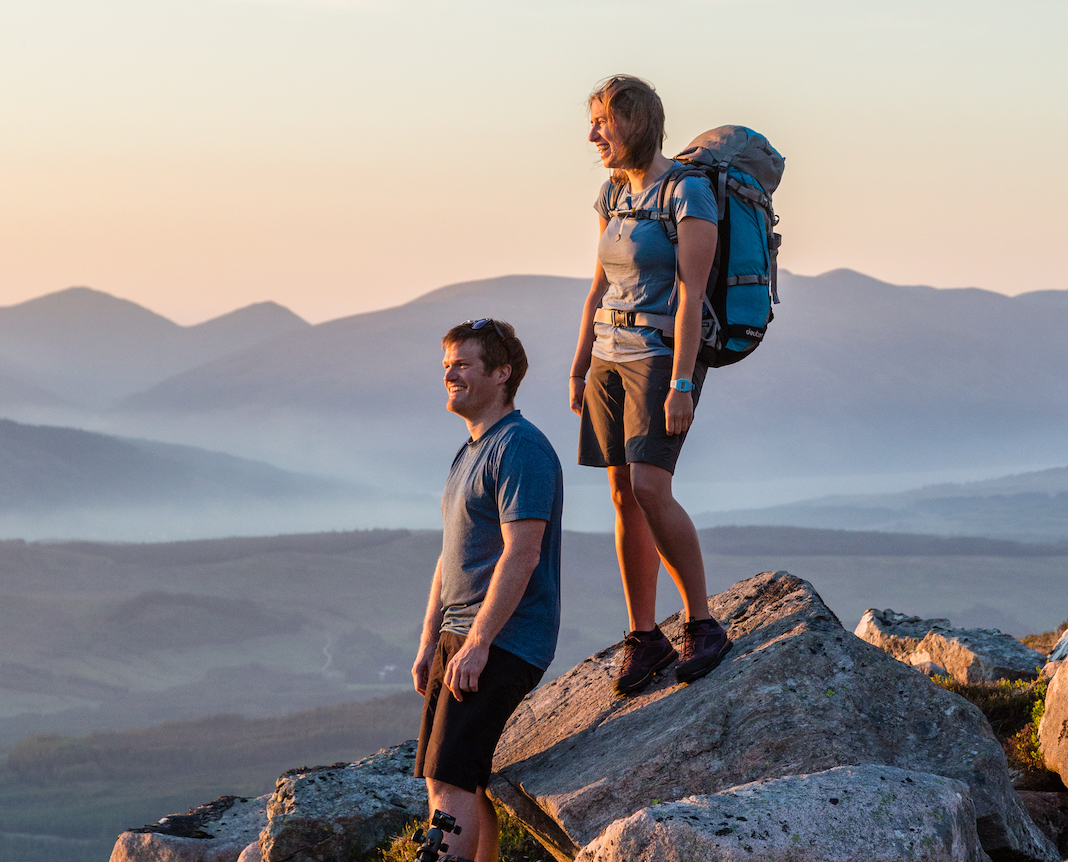
Enjoying the views in the Mamores. Photo: Dougie Cunningham
There’s a great thrill in reaching a summit or spotting a waterfall along your route, but if you slow down on your walks and adopt a curious mindset it will open up small wonders throughout the day. Take time to notice the flora and fauna, the geology and the landscape around you to give your walks that extra sense of wonder. Overhead, look out for a kestrel hovering above its prey or a peregrine falcon diving at full speed – both sights to behold. Or underfoot keep an eye out for interesting plants. Butterwort and sundew are both insectivorous plants found in boggy areas. They have evolved to capture small insects (usually midges) to gain essential nutrients in the poor soils on the hills.
Hostile Habitats: Scotland’s Mountain Environment by Mark Wrightham and Nick Kempe, and Nature of Snowdonia by Mike Raine are great reference guides to help identify all those fascinating things you discover along your wanderings.
7. Learn what to do if something goes wrong
In the case of an emergency, contact the local mountain rescue team by calling 999 and asking for the police then mountain rescue. They will want to know your exact location (mobile apps such as OS Locate can help with this), what kit you have, details of the incident and will ask you to stay where you have signal if you have moved from your party to call them. But with appropriate planning and preparation, you can reduce your chances of ever needing help. Remember to pack an extra layer that you don’t intend to wear and a group shelter or blizzard bag, in which you can stay put in relative comfort for a few hours if needs be, rather than resorting to calling mountain rescue at the first sign of strife.
Hillwalking for beginners: find out more
Courses
Plas y Brenin (pyb.co.uk), the national outdoor centre in Snowdonia, runs a series of residential courses to help beginners get mountain confident, including ‘hill skills – 2 day’ (£228) and ‘navigation skills for hill and mountains walkers – 2 day’ (£327). Alternatively simply Google for local instructors running navigation or hill skill courses in your area, or search for one via Mountain Training’s ‘Find a Leader’ facility.
Online resources
This very website has a wealth of information and advice from a range of experts – take a look around! The British Mountaineering Council’s (BMC) website also has some excellent resources, including two free PDF booklets entitled ‘New Hill Walkers’ and ‘Safety on the Mountains’.
Books/DVDs
Two useful resources include the BMC’s Hill Walking Essentials DVD and the book Hillwalking by Steve Long.
Walking groups and clubs
The Ramblers (ramblers.org.uk) has over 500 volunteer-led walking groups across the UK, including groups specifically for people in their 20s, 30s and 40s, while the BMC also publishes a list of over 300 hillwalking and mountaineering clubs. On top of these traditional groups, a fantastic new breed of outdoor social groups has emerged over the past few years with an emphasis on under-represented groups in the outdoors such as people from BAME backgrounds. Check out Black Girls Hike, Steppers UK, and Boots and Beards.
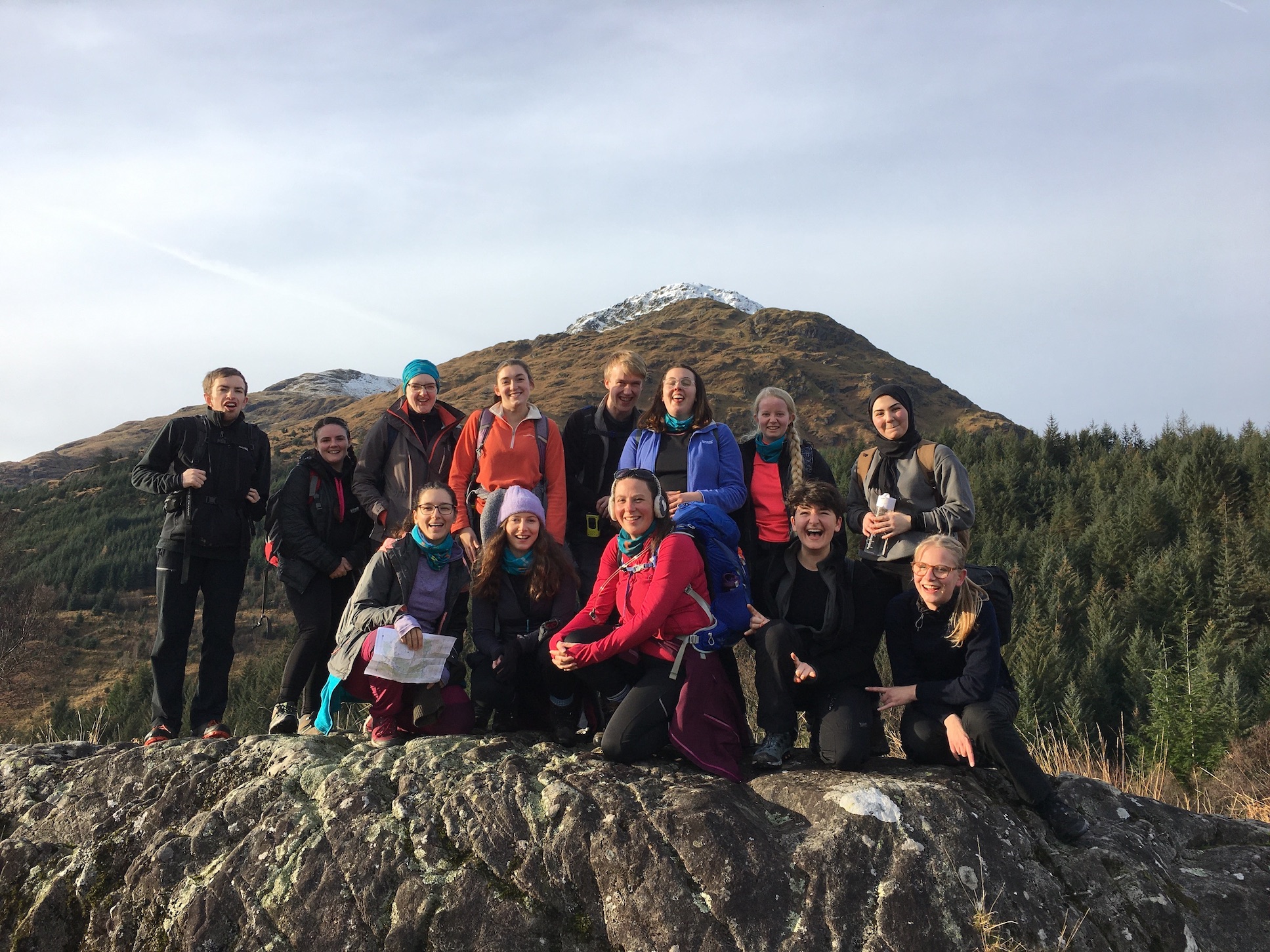
A young walking group in the Arrochar Alps, Scotland. Photo: Ramblers Scotland

